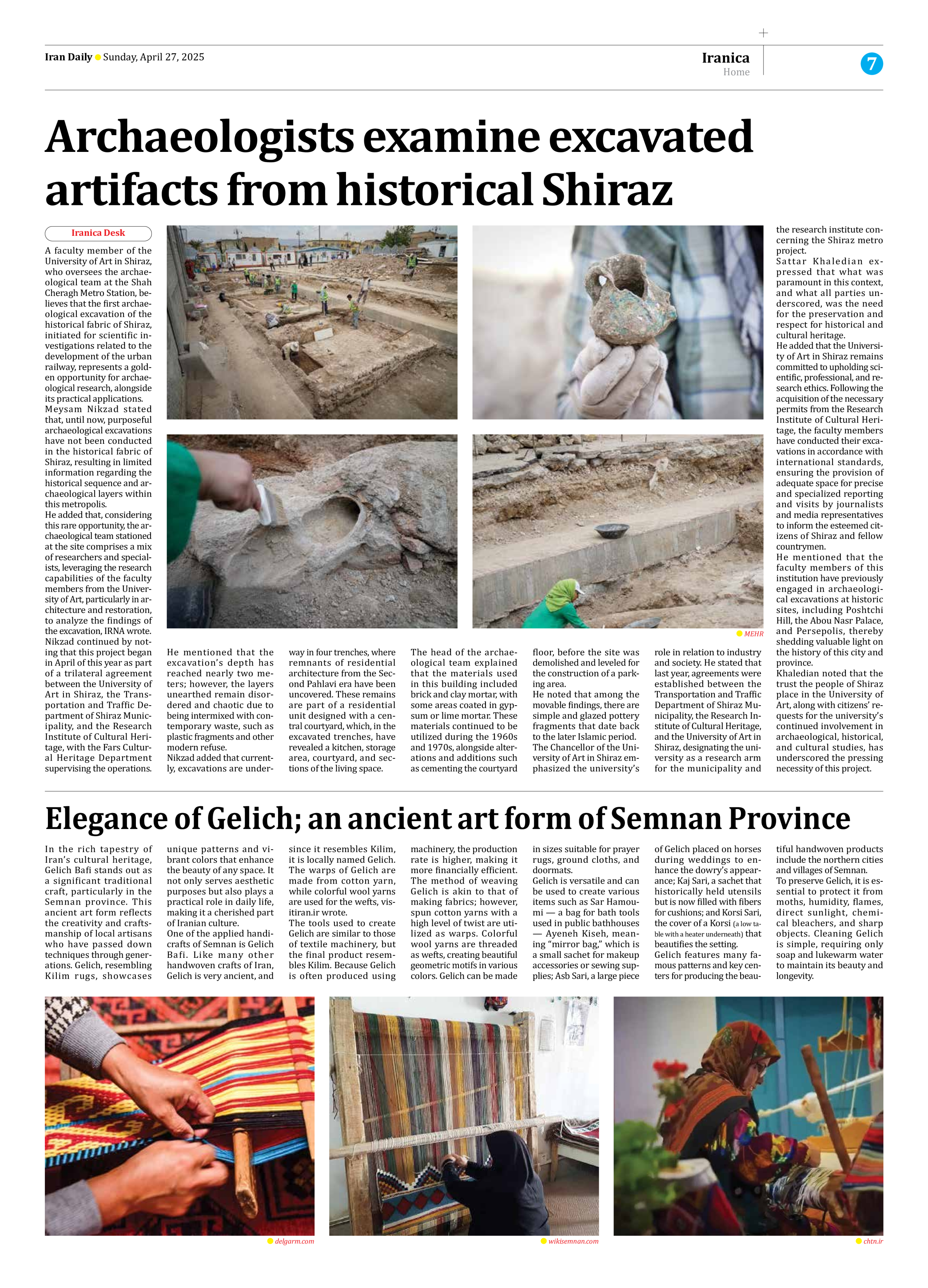
Archaeologists examine excavated artifacts from historical Shiraz
A faculty member of the University of Art in Shiraz, who oversees the archaeological team at the Shah Cheragh Metro Station, believes that the first archaeological excavation of the historical fabric of Shiraz, initiated for scientific investigations related to the development of the urban railway, represents a golden opportunity for archaeological research, alongside its practical applications.
Meysam Nikzad stated that, until now, purposeful archaeological excavations have not been conducted in the historical fabric of Shiraz, resulting in limited information regarding the historical sequence and archaeological layers within this metropolis.
He added that, considering this rare opportunity, the archaeological team stationed at the site comprises a mix of researchers and specialists, leveraging the research capabilities of the faculty members from the University of Art, particularly in architecture and restoration, to analyze the findings of the excavation, IRNA wrote.
Nikzad continued by noting that this project began in April of this year as part of a trilateral agreement between the University of Art in Shiraz, the Transportation and Traffic Department of Shiraz Municipality, and the Research Institute of Cultural Heritage, with the Fars Cultural Heritage Department supervising the operations.
He mentioned that the excavation’s depth has reached nearly two meters; however, the layers unearthed remain disordered and chaotic due to being intermixed with contemporary waste, such as plastic fragments and other modern refuse.
Nikzad added that currently, excavations are underway in four trenches, where remnants of residential architecture from the Second Pahlavi era have been uncovered. These remains are part of a residential unit designed with a central courtyard, which, in the excavated trenches, have revealed a kitchen, storage area, courtyard, and sections of the living space.
The head of the archaeological team explained that the materials used in this building included brick and clay mortar, with some areas coated in gypsum or lime mortar. These materials continued to be utilized during the 1960s and 1970s, alongside alterations and additions such as cementing the courtyard floor, before the site was demolished and leveled for the construction of a parking area.
He noted that among the movable findings, there are simple and glazed pottery fragments that date back to the later Islamic period.
The Chancellor of the University of Art in Shiraz emphasized the university’s role in relation to industry and society. He stated that last year, agreements were established between the Transportation and Traffic Department of Shiraz Municipality, the Research Institute of Cultural Heritage, and the University of Art in Shiraz, designating the university as a research arm for the municipality and the research institute concerning the Shiraz metro project.
Sattar Khaledian expressed that what was paramount in this context, and what all parties underscored, was the need for the preservation and respect for historical and cultural heritage.
He added that the University of Art in Shiraz remains committed to upholding scientific, professional, and research ethics. Following the acquisition of the necessary permits from the Research Institute of Cultural Heritage, the faculty members have conducted their excavations in accordance with international standards, ensuring the provision of adequate space for precise and specialized reporting and visits by journalists and media representatives to inform the esteemed citizens of Shiraz and fellow countrymen.
He mentioned that the faculty members of this institution have previously engaged in archaeological excavations at historic sites, including Poshtchi Hill, the Abou Nasr Palace, and Persepolis, thereby shedding valuable light on the history of this city and province.
Khaledian noted that the trust the people of Shiraz place in the University of Art, along with citizens’ requests for the university’s continued involvement in archaeological, historical, and cultural studies, has underscored the pressing necessity of this project.







